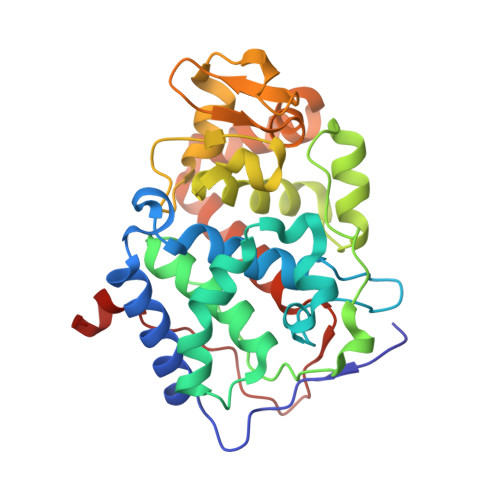Nature of the ferryl heme in compounds I and II.
Gumiero, A., Metcalfe, C.L., Pearson, A.R., Raven, E.L., Moody, P.C.(2011) J Biol Chem 286: 1260-1268
- PubMed: 21062738
- DOI: https://doi.org/10.1074/jbc.M110.183483
- Primary Citation of Related Structures:
2XI6, 2XIF, 2XIH, 2XIL, 2XJ5, 2XJ6, 2XJ8 - PubMed Abstract:
Heme enzymes are ubiquitous in biology and catalyze a vast array of biological redox processes. The formation of high valent ferryl intermediates of the heme iron (known as Compounds I and Compound II) is implicated for a number of catalytic heme enzymes, but these species are formed only transiently and thus have proved somewhat elusive. In consequence, there has been conflicting evidence as to the nature of these ferryl intermediates in a number of different heme enzymes, in particular the precise nature of the bond between the heme iron and the bound oxygen atom. In this work, we present high resolution crystal structures of both Compound I and Compound II intermediates in two different heme peroxidase enzymes, cytochrome c peroxidase and ascorbate peroxidase, allowing direct and accurate comparison of the bonding interactions in the different intermediates. A consistent picture emerges across all structures, showing lengthening of the ferryl oxygen bond (and presumed protonation) on reduction of Compound I to Compound II. These data clarify long standing inconsistencies on the nature of the ferryl heme species in these intermediates.
Organizational Affiliation:
Department of Chemistry, Henry Wellcome Building, University of Leicester, University Road, Leicester LE1 7RH, United Kingdom.


















